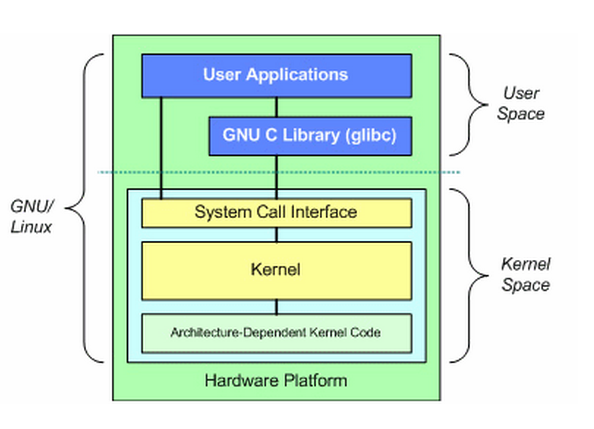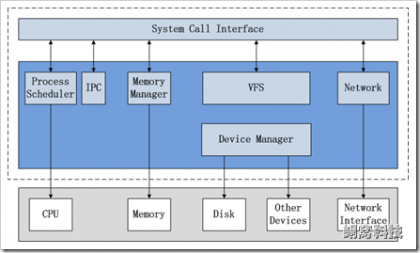Links: https://blog.csdn.net/changexhao/article/details/78321295
A, Linux kernel is only part of the Linux operating system, all hardware devices under its management system, for its to the runtime library or application provides an interface via system calls; its core function is to manage the hardware and application usage, the main module comprises a CPU, memory (memory and external memory), input and output devices, network devices and other peripheral devices; 

- System call interface SCI: such as open, read, write and so on;
- Process Management PM: creation process, the destruction process, scheduling process and so on;
- Memory Management MM: memory allocation and management;
- Virtual File System VFS: provides a unified user interface for a variety of file systems;
- Network stack: providing a variety of network protocols;
- CPU architecture relevant code Arch: improve portability;
- Device driver DD: drive various equipment, account for about 70% of the core;
Second, the overall architecture and subsystems division

1 Process Scheduler:
2 Memory Manager:
3 VFS(Virtual File System):
4 Network:
5 IPC:
To be continued ~